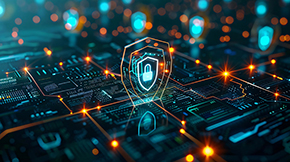Russian scammers have wreaked havoc on the U.S. prescription drug market, causing millions of Americans to pay out-of-pocket for expensive drugs or forego their meds because drug stores could not verify their insurance information. The problem began in late February when the hackers attacked UnitedHealthcare Group’s Change Healthcare business unit, which funnels prescription claims from pharmacies to other firms that assess how much insurance will cover. A Russian-speaking ransomware ring, known as ALPHV or Blackcat, claimed responsibility for the cyberattack, despite an international law enforcement crackdown that targeted the group in December. In a typical ransomware attack, hackers encrypt files and then demand money to unlock them. In the United Healthcare case, the hackers stole patient data and encrypted company files. The company then shut down its network. Wired reported that $22 million in bitcoin was paid to ALPHV in early March, which suggested to some internet security experts that it was a ransom payment for the attack. If that proves to be true, the experts said it would only encourage more attacks in the future. Ransomware can also affect personal computers when users visit suspicious websites or open attachments or links infected with malware. To protect your own computer against such an attack, beyond keeping backup copies of all your data, Microsoft suggests that consumers:
- Look carefully at email addresses and web pages for mistakes in spelling. For example, it an email comes from PayePal instead of PayPal, it’s not the real thing.
- Check spacing and punctuation. Hackers may refer to iTunesCustomer Service, rather than the legitimate iTunes Customer Service, a mistake that can easily fool unsuspecting users into clicking on a malicious link.
- Keep your computer security up to date. One easy trick is turning off your computer at least once a week. Important security applications are updated when you turn the computer back on.

